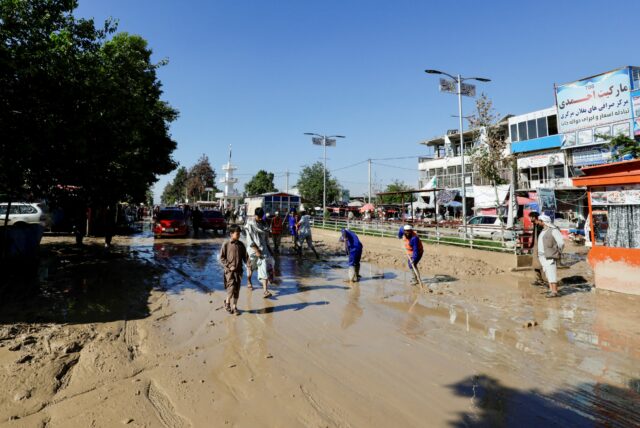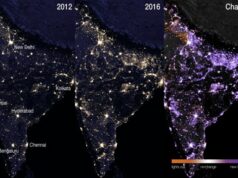At least 50 people are dead following flash floods in central Afghanistan, official said on Saturday. Mawlawi Abdul Hai Zaem, head of the information department in central Ghor province, told Reuters there was no information about how many people were injured in the rain spell that began on Friday, which had also cut off many key roads to the area.
It’s been over a week since flash floods in the northern Baghlan province killed 300 people and destroyed 2000 homes in five districts.
Badakshan in eastern Afghanistan and Herat in the west were also effected.
Last week’s flash floods were caused by an unusual combination of heavy storms after a dry winter. It left the ground too hard to absorb all of the rain and so the destruction was widespread.
In areas where medical teams have been able to reach, mobile aid centres have been set up and bodies of the dead are being removed. Survivors of the flood in Ghor recalled searching through knee-deep mud for their family members. Some bodies were recovered miles from their homes.
Around 63,000 acres of fertile farmland have been completely destroyed, according to the UN, with acres of cotton and wheat under layers of mud. Majority of Afghans are dependent on farming for a living and the future looks bleak.
In many cases, flood waters are too high for families to return to their homes. So they have set up temporary shelters under tarpaulin tents.
Even before this devastation, the United Nations had estimated that 24 million people or more than half the population of Afghanistan, would need some form of humanitarian assistance this year.
After overcoming years of conflict, natural disasters appear to have taken over. Around 150 people died of severe cold last year. Also last year was a deadly 6.3 magnitude earthquake that shook Herat killing 2000 people.
Thirty eight years in journalism, widely travelled, history buff with a preference for Old Monk Rum. Current interest/focus spans China, Technology and Trade. Recent reads: Steven Colls Directorate S and Alexander Frater's Chasing the Monsoon. Netflix/Prime video junkie. Loves animal videos on Facebook. Reluctant tweeter.





